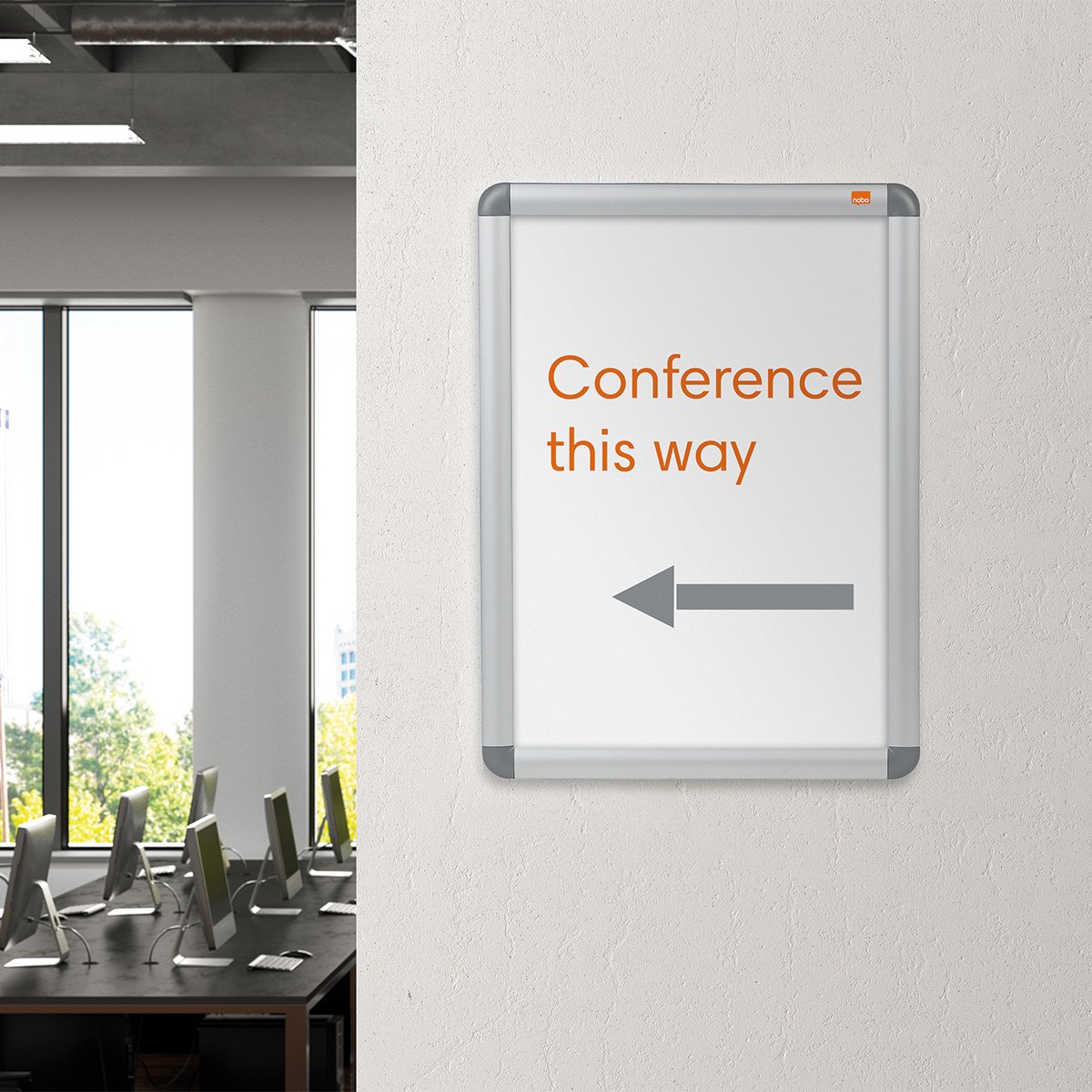Hybrid Meeting Mastery: Best Practices for a Productive Blend
02.01.2024
As the way in which we work has changed different day-to-day activities have evolved too. Hybrid meetings are now commonplace as hybrid working has become the norm for many office-based businesses.
A hybrid meeting combines both in-person and virtual elements. In a hybrid meeting, some participants are physically present at a specific location, such as a conference room, office, or event venue, while others join remotely through various communication technologies, such as video conferencing software or teleconferencing tools. This format allows for a blend of face-to-face meeting interaction and virtual participation.
In this blog we will delve into hybrid meetings; looking at their core elements, the benefits, and tips for carrying out your own.
What is a hybrid meeting?
Whilst we have provided an overview, below we breakdown the key components of a hybrid meeting:
In-person attendees
These are the participants who are physically present at a specific meeting location. They can engage in traditional face-to-face interactions with others in the same physical space.
Virtual attendees
These are your participants who join the meeting remotely, typically through video conferencing, audio conferencing, or other virtual communication tools. They can participate and contribute to the meeting discussions, presentations, and activities from their own locations just in the same way as an in-person attendee. However, they’ll be present via a screen or a phone.
Technology integration
Hybrid meetings rely on comprehensive technology solutions to facilitate communication between present and remote attendees. This may include video cameras, microphones, speakers, and collaboration software to bridge the gap between the two groups.
Agenda and content sharing
Just like a regular meeting, sharing a meeting agenda and any other relevant documents is important. To ensure everyone has access to the same information this is typically provided digitally.
Engagement strategies
If you have held hybrid meetings you’ll understand that there are different engagement strategies to put into practice. It’s important that remote attendees feel included and actively participate as much as those who are physically present.
Logistics
Planning is essential for a successful hybrid meeting. Choosing the right technology, scheduling, time zone consideration, and content sharing all need to be considered.
What are the benefits of a hybrid meeting?
Now we understand the different elements that come together to make a hybrid meeting, you’ll likely want to know why they’re worth the effort. Below are some of the championed benefits of hybrid meetings.
Increased accessibility
Hybrid meetings allow participants from different locations to join, making it more accessible for people who might have difficulty attending in person. This can include individuals with physical disabilities, those in remote locations, or those who can't travel due to time or cost constraints.
Cost savings
Hybrid meetings can be cost-effective for both companies and individuals. Attendees can save money on train fares and fuel, whilst businesses don’t have to expense hotel stays and renting larger meeting spaces.
Flexibility
Invited meeting attendees have the flexibility to choose whether to attend in person or virtually. This autonomy can lead to higher attendance rates, as people can participate in a way that suits them best.
Wider audience reach
Hybrid meetings can attract a larger audience since they aren't limited to those who can physically attend a specific location. This broader reach can be advantageous for conferences, seminars, and events where reaching a global audience is desirable.
Reduced carbon footprint
We fewer attendees needing to travel, hybrid meetings can contribute to a reduction in greenhouse gas emissions and environmental impact. If you’re part of business passionate about meeting sustainability goals hybrid meetings can help you reach targets.
Enhanced technology integration
Hybrid meetings often leverage advanced technology solutions for virtual participants, such as high-quality video conferencing, interactive collaboration tools, and real-time language translation. This can enhance the overall meeting experience.
Increased productivity
With travelling to meetings cut short for remote attendees time can be saved and put back into work or personal activities, potentially improving overall productivity.

Continuity in uncertain times
In situations like health crises or natural disasters, hybrid meetings provide a safety net, allowing businesses to continue functioning without disruption. This is especially relevant for business continuity planning.
Wider talent pool
By having hybrid meetings as the norm, companies can widen their search when hiring new talent. Hybrid meetings mean that individuals overseas can be considered for roles within the company who could potentially have better skills than if locality was part of the employment criteria.
Data and analytics
Virtual components of hybrid meetings can be tracked and analysed more easily which can be helpful for larger events. This data can provide insights into attendee engagement, participation rates, and other metrics. This could help you make informed decisions about future meetings.
Improved work-life balance
Participants attending virtually can enjoy better work-life balance by avoiding the need to travel, making it easier to integrate professional and personal commitments.
Downsides of hybrid meetings compared to in-person meetings
Whilst hybrid meetings undeniably have their perks, there are certain disadvantages when compared to in-person meetings. Here are some of the specific downsides of hybrid meetings compared to a traditional meeting setup:
- Communication problems
- Lack of team cohesion
- Inclusivity hurdles
- No scope for spontaneity
- Security and privacy concerns
- Technology failures and limitations
- Meeting fatigue
- Management challenges
Having in-person meetings has the added benefit of enhancing productivity and collaboration by using effective collaborative tools such as whiteboards and Flipchart Easels, helping teams create and share ideas together.
However, just because hybrid meetings have pitfalls does not mean you shouldn’t consider them if you haven’t already. To address these downsides businesses should develop clear policies and practices for hybrid work, invest in technology and training, and prioritise effective communication and inclusivity to create a balanced and productive work environment.
Hybrid meetings, which combine in-person and remote participants, have become increasingly common due to advances in technology and the changing nature of work. To successfully conduct your own hybrid meetings, consider the following key tips:
Key tips for carrying out your own hybrid meetings
Every hybrid meeting is different so being open to adjusting your approach based on feedback and experience is vital. We have put some of our best hybrid meeting tips below, catering to both in-person and remote participants to help you foster collaboration and communication.
Plan ahead
Define clear objectives for the meeting and ascertain who will be in-person and whole will join remotely. Once you have this information you will be able to choose the right technology and platforms for the meeting.
Test your tech
Ensure that all necessary equipment and software are set up and tested before the meeting. You can conduct audio and video tests easily to make sure remote participants can hear and see properly.
Set some rules
Establish meeting etiquette, such as muting microphones when not speaking. When the meeting starts encourage everyone to introduction themselves.
Provide meeting materials in advance
Share meeting agendas, documents, and presentations with participants ahead of time via email. This helps all attendees come prepared and reduces the time spent on document and screen sharing during the meeting.
Use quality equipment
Invest in good-quality microphones and cameras for both in-person and remote settings. You should also be mindful of proper lighting to enhance video quality. Typically natural daylight is best.
Engage remote participants
Encourage remote attendees to actively participate by asking questions, sharing their thoughts, and contributing to discussions. You can use breakout rooms or virtual polls to engage attendees.
Record the meeting
Record the hybrid meeting for those who couldn't attend in real-time or for future reference. A recording can also be sent along with the meeting minutes when they are completed.
Security
Lastly, ensure the security and privacy of the meeting by using secure video conferencing platforms and following best practices for data protection.











